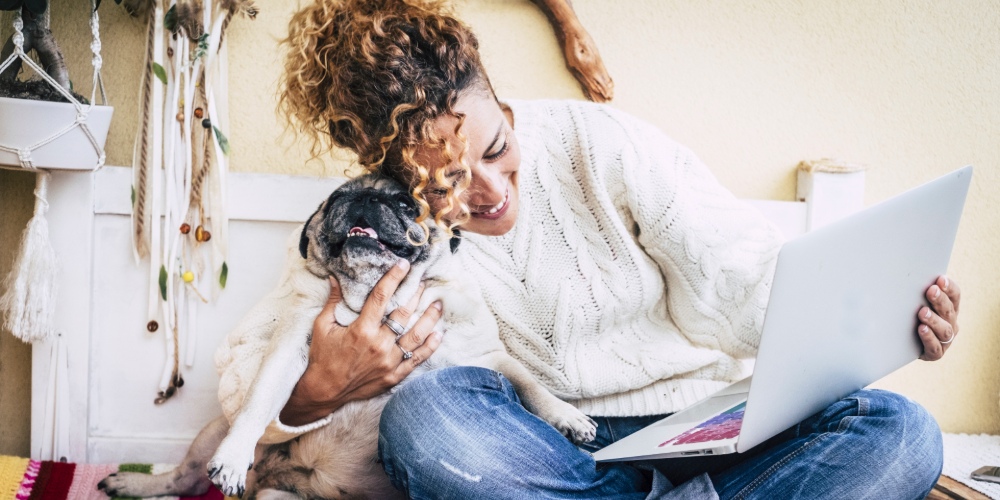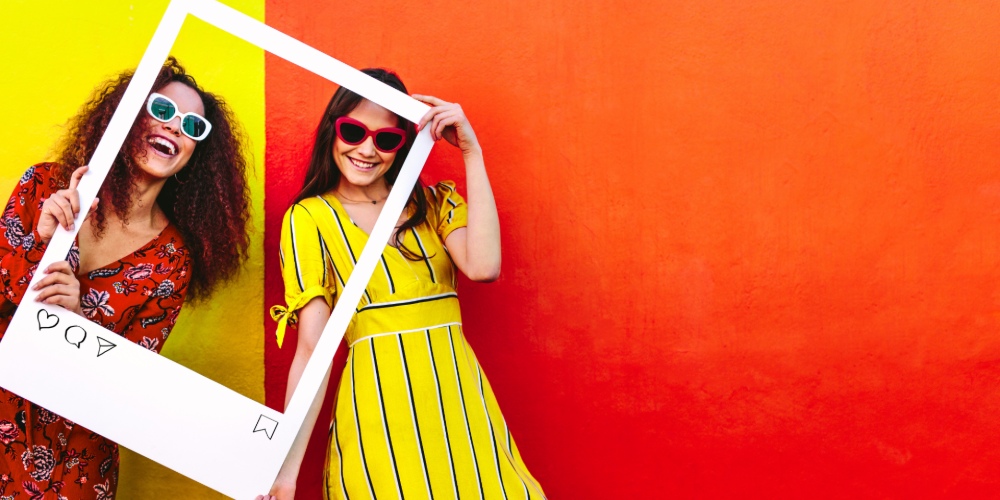If you thought influencer marketing was the hot new thing, think again. Jenny Heinrich, board member of the Influencer Marketing Association and Senior Vice President of Influencer Marketing at Ketchum, says influencer marketing has been around for decades (or more)! Jenny herself has been a powerhouse in the influencer marketing world since the early 2000s, when internet influencers were limited to blogs and Myspace – before Kevin Systrom had even thought of creating Instagram.
We sat down with Jenny to discuss her career and learn how she fosters relationships with the influencers she works with and the innovative campaigns she’s worked on. Grab your coffee (or happy hour cocktail?) and hit play to get advice on how your brand can break into influencer marketing.
Interview with Jenny Heinrich
Perlu: Hello, and welcome to the Perlu podcast, a podcast where we chat with influencer marketing professionals, social media influencers, bloggers, YouTubers, podcasters, you name it, about what has led to their success. I’m your host, Alexis Trammell, and today we have the pleasure of hearing from a true thought leader in the influencer marketing world, Jenny Heinrich. Jenny serves on the board of directors for the Influencer Marketing Association. She is Ketchum’s senior vice president of influencer marketing, and she has taught influencer marketing at the University of Chicago, Northwestern and DePaul Universities, Columbia College and Central Michigan University. Her specialty is in developing meaningful and sustainable relationships and strategic marketing programs that engage, excite and inspire consumers. Thank you so much for joining us today, Jenny.
Jenny Heinrich: Hi, it’s a pleasure to be here. I’m thrilled to be speaking with you.
Perlu: How about you tell us about yourself and how and why you got into this influencer marketing game?
Jenny Heinrich: Sure. It’s kind of crazy to say, but I’ve been in the influencer marketing world since the mid 2000s. It’s funny when I speak with clients and colleagues, and everyone thinks that influencer marketing is this new, hot thing that’s really just come about in the past few years, but in actuality, influencers have been around for a really long time. Think back to your traditional Tupperware party back in the ’60s and ’70s.

If you think about it, those were influencers. They were influential moms and wives who hosted parties for their friends and invited them all to experience the wonder of Tupperware. And the goal there was to get them excited and get them buying Tupperware products as well. So influencer marketing is not new. I’ve been working with brands, big companies, products, putting products in the hands of influential consumers since really about mid 2000s, in an effort to develop positive word of mouth, positive experiences, so that consumers love the products and end up buying them. So influencer marketing has been a part of my world for over a dozen years now, really.
Perlu: Wow. That’s amazing.
So how did you first get into it?
Jenny Heinrich: The first foray in my career into influencer marketing was in and around 2006…when I was working in Toronto for a word-of-mouth marketing company called Matchstick. They were one of the founding members of WOMMA, the Word of Mouth Marketing Association, and they did pretty much exactly what I just explained. And they found thought leaders – influential people in social circles.
They had a wide array of clients, everywhere from food clients to shampoos to beverage and alcohol, whether it was beer or soda. And they found influencers. They gave them product, they gave them enough to try themselves and to give some to their friends, and they developed content. That was right at the beginning of what I like to call the social revolution and evolution, where…people who had opinions started a blog, and they started writing about the things they love and the things they hated, and it gave them an outlet and a forum in order to do so.
And those influential mommy bloggers as they were closed in the mid 2000 went onto social. So at the time it was really Facebook, because nothing else existed back then. Soon after, Twitter came around…And they would go onto their social channels and talk about the products that they loved and the ones they didn’t love so much. So that was really my first foray.
It’s funny to think of finding influencers back then, because there weren’t any tools that really helped identify internet influencers.
We did it on the street. We had surveys and we would camp out at retailers and different events, experiences at the beach if it was the kind of place where we thought that our target influencers would hang out. And we took them through surveys in order to establish their influence and gauge their interest in joining our programs.

So that was in 2005, 2006 like I mentioned. And then really I’ve been working with influencers ever since.
Perlu: Wow. That is so incredible. What hard work that must’ve been for you all.
Jenny Heinrich: It was hard. I think the hardest part about it, which is kind of funny and frustrating at the same time, is how we measured their influence. Back then, Facebook didn’t have the sophisticated analytics [it does] now. Neither did blogs. We were really looking at unique monthly visitors and page views to see how many people actually visited their site. But any of that deep analytics – the preference, the sharing of the content, the tracking, actually hearing about a product in order, you know, did they go into the store, did they buy it? Did they like it, did they share about it? – the exponential reach that content has now and that we’re able to measure just wasn’t possible back then. So not only was it challenging finding influencers, but it was also challenging measuring the impact of the programming that we were creating for brands.
Collaborating is Easiest on Perlu. Schedule a Demo Today!
<As a Brand> <As an Influencer>
Big brands, not tiny companies. This is the P&G and the Coca-Cola and Nike and McDonald’s and all of those very recognizable and global brands. They were amongst the first to really start into influencer marketing. And it was still very challenging to actually measure the impact back then.
Perlu: Yeah, I bet.
So what about what you do now? What do you love about it?
Jenny Heinrich: I love so much about it. Where do I even start? So first I love the relationships that are formed. I was at a conference yesterday and one of the speakers asked the audience of hundreds and hundreds of people if they are doing now what they thought they’d do when they were a teenager or when they were going into college. And it was a quite mature audience, and I was one of maybe five people that raised their hand and said, “I actually am doing exactly what I always wanted to do.”
I always knew I wanted to be in advertising, marketing communications, strategy, engaging consumers and developing relationships with people that can make a difference in some way. And of course there’s levels of difference that people make or the different products and clients that I’ve worked with.
But I think the best thing about influencer marketing are the relationships.
I am actually legitimately friends with a lot of the influencers that I’ve worked with, that I’ve partnered with. I saw them and I met them when they were tiny and they were just starting out, and I’ve seen them absolutely blow up to the point of having their own shows on the Food Network or their jewelry line being shown at Barneys New York. Just huge, from 50,000 followers on Facebook to 6 million. So I love the relationships I’ve formed. I really consider many of them friends.

And then also, I know it sounds funny, their agents – I’ve developed great relationships with people that are managing the influencers, because we partnered really strategically on so many different programs. They know exactly what I want, the expectations, the right influencers who would make my program stand out and really deliver impactful content to the clients I work with. I’ve made friends with them. And then clients. When you do something and you put together a strategy and you present it to them – the initial thought bubble, the measurement, the fruition of everything coming to be – it makes the clients look amazing to their bosses. It makes their products engage with the consumers in the right way and drive sales. All those different relationships are so meaningful and I just love all of them.
Perlu: That sounds wonderful.
So what does developing meaningful and sustainable relationships mean to you? How do you go about fostering relationships with influencers?
Jenny Heinrich: I think it’s just about being a real human. I once wrote a list of how to actually communicate with an influencer. And really they’re you and I; they’re people who have interests and who know a lot about certain topics. They develop content in order to deliver information to their audience, and they love certain products and experiences. They dislike others. So whenever I reach out to an influencer and speak to them, I’m truly myself. I don’t put on marketing speak or my senior vice president voice. Instead, I talk to them as though it’s a friend of mine and we’re having a coffee. I tell them exactly who I’m working with, what the ask is, what I’m hoping to achieve. I’m really honest; I’m down to earth, and I really feel like that’s a great approach.
You know, I try not to play the game as much as humanly possible. Of course, negotiation on compensation is always a bit of a back and forth. But really, if I’m honest, if I’m straightforward, if I truly understand them, their brand, the products that I see them having affinity for through the content that they’re producing, whether it’s paid for or organic content that they’re just creating because they love it, I try to make sure that whatever opportunities I’m bringing to those influencers and to my clients and then it’s not force-fitted – that it can be natural and seamless. And I think that those are the programs that I’ve created with influencers that have been the most impactful and that have worked the best. So that’s really my approach.
Foster Strong Influencer Relationships
From a consumer side, I always try to make it relatable and resonant with the audience because you have to. If it sticks out like a sore thumb and if it doesn’t make at all sense with what the consumer has going on in their life, then the program, the content isn’t going to work, it’s going to tank and it’s just going to have a negative impact on the program and budget, because it’s basically a wasted partnership. So on all sides, I just try to be really, really transparent and I try to understand everyone’s motivation, what everyone wants to get out of the program, whether it’s the influencer or the agent, the client, the consumer, what they need and having that perspective of sitting in everyone’s seats around the table and putting together the best program to have the greatest results for everyone.
Perlu: That is a beautiful concept. I love that. And it’s very on brand and valued strongly by Perlu as well. So that’s great to hear. So I’m curious,
What value do you see in working with micro or even nano influencers?
Jenny Heinrich: Sure. So I think of influencer marketing, and I teach this in my classes, as a pyramid. At the very top of the pyramid, you’ve got your celebrities and your top, top tier influencers. When you’re putting together a program, you only need very few of them. They’re reach is massive. They’re very expensive, so you can’t usually partner with more than just a few of them, or sometimes even just one. And as you work your way down the pyramid, with the pyramid obviously being bigger at the bottom, that’s where you start to learn to scale. You find your power middle influencers, your advocates, your fans. The people at the very bottom are just me and you, who love different products, different plans, different categories and we constantly talk about it in our social spaces and offline with our friends and family. What I find is that that middle to bottom of the pyramid [has] higher engagement. You’re going to see higher engagement with their content than the top.
And it’s a math game really. If you’ve gotten millions and millions and millions of followers at the very top, engagement is typically quite low just because of scale, because there’s so many people that you have the opportunity of reaching. Whereas the bottom, especially at the very bottom, like your nano and micro influencers, reach is not as strong as your celebrities and your top tier influencers, which is typically why in a program, you need more of them to make up that reach. You can afford more of them because they’re less expensive than the top.
But what we find often is that their engagement is really strong. They have a relationship with a great majority of their audience. They respond to comments, they go back and forth. And they answer questions in their social feeds. They’re more niche in terms of the topics that they talk about. So they have that relevance and that influence within whatever category it might be, from automotive to beauty to food.
So typically, I like to put together a hybrid approach where you’ve got a bit of each of the different levels of influence.
But the value of the micro and the nano influencers is that they’re affordable; they’re willing to flex and work with the brands in order to develop that really great content and showcase the brand in a way that is very brand facing.
So that you have brands and clients that work with them and definitely have that visibility, and their engagement is really high. Their audience trusts their recommendations and knows that if they’re partnering with [a brand], it’s because they really believe in whatever product or brand it is, and they’re willing to engage and go back and forth with their consumers to have that dialogue, which is really important and oftentimes missing with the really, really top influencers and celebrities.

Perlu: So with the nano- and micro-influencers, I’m curious as to what a typical relationship would look like with them, when there may be so many in the program?
Jenny Heinrich: That’s a great question. And I think it really ebbs and flows. I don’t think there’s a typical relationship that’s consistent across the board. I like to say that I have relationships with all the influencers that I partner with. With nano and micro, depending on how much content they’re creating – if it’s a one off, which I typically don’t recommend, versus having more of a long term approach where they’re going to be posting throughout a season or throughout several months or even a calendar year, you’ll develop different relationships.
One-offs you don’t really have that chance to get to know them and have that ongoing dialogue with them. But when you’re working with influencers through the winter months or through the summer season or even through the year, you’ve got that constant drumbeat of conversation going back and forth with them and you get to know them, you get to know their kids, what they’re doing. If they’re going away on vacation for a week and they’re not going to be available or maybe they are.
And when you’re developing that long-term program…what I like to do is say to an influencer, ” Where would this product…shampoo as an example…where would the shampoo fit in with things that you already have going on? So you can seamlessly weave it into the content, into the narrative that you’re already going to be creating. So that it’s really, really organic and it doesn’t look forced into a specific situation.” So you get to know influencers in different ways, depending on what you want to do with them.
Perlu: That sounds wonderful. That’s great.
So out of all of those collaborations that you’ve managed, what have been some of your favorite or most creative or most impactful influencer marketing campaigns?
Jenny Heinrich: It’s a good question. I love some of the programs with the highly recognizable brands. We did a program a couple of years ago for Kellogg’s Frosted Flakes, where we brought back Tony the Tiger. We worked with Jim Henson creation, a la the Muppets and Sesame Street, and we redid Tony the tiger. That was a really fun program. We partnered with an illusionist and magician, and [he and Tony] created amazing illusions and digital content showcasing Frosted Flakes. So that was a really, really fun program.
Another one that is very different but extremely impactful was for the Alzheimer’s Association, where we wanted to create a groundswell of support for one of their annual initiatives called The Longest Day where there was just a sweep across social of everyone wearing purple using the Hashtag #endALC and really driving that awareness about The Longest Day. Because with Alzheimer’s, you go in circles and circles because it’s a kind of a constant repetition of bringing back thoughts and memories, and those that suffer with the disease and the caretakers that take care of those with the disease…it’s a challenge.
So we did a program where we partnered with hundreds of influencers of all different levels who had some connection to Alzheimer’s…and we created really meaningful content. It was true storytelling, longform on blogs, photographs on Instagram and on Facebook in order to really galvanize the support around #endALC and The Longest Day initiative that they had. So that was a really meaningful program.
So it varies. It’s everywhere from cereal to a new medication that just launched to an association like the Alzheimer’s Association or the American Heart Association – all different kinds. And some are fun; some really drive to the heart. So I’ve loved working on a variety of different programs with clients. I love them all. I’ve also disliked some, but that’s neither here nor there. There’s tons of products out there and influencers are re a great way of driving that reliable third-party, credible recommendations.
There’s always a place for influencers in an overall communication strategy.
Perlu: For sure. Wow. Yeah, the Alzheimer’s program really hits home. That’s a beautiful campaign.
How do you decide which influencers you would like to work with long term?
Jenny Heinrich: Well, I am seasoned in this field, which is another way of saying I’m pretty old, so I know a lot of influencers, and I just know the space. So when I’m presented with an idea, that initial kind of thought bubble of, “We want to do this; what are we going to do?” Some influencers just naturally come to mind because I’ve worked with them in the past or I follow them, seen other work that they’ve done. I have a sense of who their audience is and the type of content, the aesthetic of their content, their looks, feel, tone, voice. So you know, some influences just come to mind immediately nowadays, unlike when I first started in influencer marketing…where we were on the street interviewing people and that was our sophisticated way of finding influencers.
Want Collabs Like Jenny’s?
Nowadays we’ve got so many tools at our disposal that pull in all the information that helps us make really educated, strategic recommendations to our clients as we’re discovering different influencers. It pulls in the API of Facebook, Instagram, YouTube, and it tells us who are these influencers? What’s the demographic of their audience? Who are they, what’s their age, where do they live? How many kids do they have? What brands have they partnered with? What’s their engagement rate overall? When they talk about this type of content, does their engagement go up? How many fake followers do they have? How many engaged followers, active followers do they have within their following? What channels are they strongest on? What influencers follow them and engage with them so that you can start to establish that exponential reach that might be possible.
All those different filters, if you will, we can activate as we’re looking at different influencers, so that exactly the right people rise to the top. And then, once we’ve got that short list, we dig in even further. We vet influencers to the nth degree based on keywords, opinions, thoughts, perspectives on certain topics. In the food category, how do they feel about GMOs? How do they feel about sugar? Back in the day it was palm tree oil.
All the different things that might be characteristics that we either want or don’t want our influencers to represent. And then when we have that final list, we start conversations, real life conversations in person if possible, or on the phone. And we talk with them and we find out their interest in the program. If what we have in mind…does this excite them? Do they think their audience would get excited by it? Does it fit? And then we go from there until we have the influencers that we want to partner with.

Perlu: Great. I love that. I love that you guys make sure that it’s always the right fit.
What are some of your biggest pain points when trying to find the right influencer for a brand? Are there any red flags you’ve identified that you tend to avoid?
Jenny Heinrich: Well before…engagement rate wasn’t available, you could determine what their following was. But you could do that without a tool. You just see how many people actually follow the specific influencers on the channel in question, but now metrics have gotten even more sophisticated. You can actually see someone might have a million followers, but how many of those followers are active? How many actually engage with the content that’s posted? So engagement rate is a new metric that has become increasingly important so you can start to drill down not the potential reach [but] what their engagement is, who is engaging with the content, what are they doing when they engage and posting on their feed.
So I’m happy that that’s now there. I encourage everyone not to look at reach as the only metric when deciding upon which influencers to partner with, because it doesn’t tell you the true story. And now with the influx of fake followers and bots, a lot of tools are now able to weed those out. Many tools out there actually give you a percentage of real followers within the influencer’s reach, which is extremely helpful. Before you really had no way of knowing how many of those million followers were just fake accounts that weren’t going to have any impact at all. So those are some sticking points.
And then, from a client side, working with your agency, working with your influencer network, with your agency who’s running your programming to allow all the influencer marketing programs to be tracked through your sales system – really partnering with that department and your marketers, your communications, your PR, whoever’s running your influencer programming, so you can create that correlation between the program that we’re doing from an influencer side and actually how it’s impacting sales. Because that makes the entire program stronger. It allows you to actually look at the impact of the money that they’re spending on influencer marketing, how it’s actually affecting sales, and to really drill down so that the next time we do a program, we can take the learnings and best practices from one program and apply them to the other, so that we’re constantly reiterating our strategy in order to drive the best results.
Perlu: So one more question for you.
Do you have any advice you’d like to share with brands who are trying to break into influencer marketing?
Jenny Heinrich: I do. My biggest piece of advice is to:
A. Have the courage to do it. It’s never too late to start. A lot of big clients are nervous to do their first program, and it’s a spend, but you’re never gonna find out if it works unless you try it.
B. For your first time, don’t try to do it by yourself. There are lots of rules and regs out there. The FTC [is a] beast. They will crack down if things aren’t disclosed in the right way. If you just try to do it on your own, you might overpay for an influencer, because you might not have the tools in order to really drill down into their engagement rate, the brands they’ve worked in the past or their content actually perform, where a lot of agencies or influencer networks, they have the tools in order to really tell you the worth of the influencer and the content and the partnership that you’re going to be paying for.
And the relationship, it’s going to take a client so much more time to put together a program themselves than it would be to partner with your agency counterpart or a network who does this every single day. It’s kind of one of those things where you contact the experts. I’m not going to try and fix a leak in my house because I wouldn’t even know where to start and I will definitely screw it up. So I call in an expert to help me, to make it happen quickly, efficiently, and to stop the leaks.
So that would be my advice for clients trying to get started.
Number one, definitely do it. And number two is for your first foray, call an expert to help guide you through the process for your first time.
Perlu: Great. That’s some great advice. So thank you so much for all of this great insight that you’ve shared with us today. And thank you again so much for speaking with us.
Jenny Heinrich: You’re so welcome. It was my pleasure.
Perlu: And thank you to everyone for listening to the Perlu Influencer Marketing Podcast. If you like our show and are interested in what it takes to succeed in influencer marketing, check out our blog at blog.perlu.com for more podcasts and blog posts, and sign up for Perlu at perlu.com to meet, mingle, connect, collaborate and grow your career. Don’t forget to join us next month for our next installation of the Perlu podcast.

